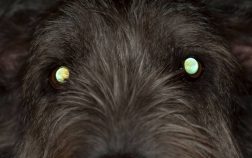Approximately 20% of people have some degree of altitude sickness and can’t tolerate high altitudes. Do dogs get altitude sickness or is it just people, however? And, if they do, does altitude affect dogs in the exact same way, or are the symptoms and effects different?
This is a surprisingly important question for many dog owners who want to go on hikes with their pets. Just as it’s important to know yourself and your own physical specifics and limitations, it’s also important to know your pet. Countless people have had their hikes and trips derailed because of an unexpected altitude sickness in their dog and countless pets have gone through some very nasty episodes.
Do Dogs Get Altitude Dickness?
Indeed they do. Unfortunately, many people don’t realize it and often get their pets in situations that can’t really handle. This is especially unfortunate as you typically won’t have veterinary services nearby while hiking or trekking up a mountain.
What Exactly Is Altitude Sickness?
Many people mistake the term “altitude sickness” as just a more scientific name for fear of heights. That’s not at all the case, however. Fear of heights (acrophobia) is just a psychological phenomenon that can happen at any altitude as long as the person is even just a few feet off the ground.
Altitude sickness, however, has to do with the reduced percentage of oxygen in the air on higher altitudes. The higher above sea level you are, the less oxygen there is in the air, and the more your body and brain are going to react to that change. It’s estimated that ~20% of people have altitude sickness at and above 8,000 feet (2,500 m) and 40% of people get it above 10,000 feet (3,000 m).
What’s often left out, however, is that dogs and other animals can have this problem as well. It’s hard to find any percentage estimates about dogs as there just isn’t that much research and data done about this. It’s intuitive to think that canines would be less susceptible to altitude sickness given that they have evolved from wolves who often prowl on such (and even higher) altitudes.
Nevertheless, it is a fact that dogs suffer from this condition, regardless of the exact percentage of cases. Additionally, there is variation depending on the breed, suggesting that some breeds have just evolved at lower altitudes and are thus now susceptible to altitude sickness.
In dogs, as with people, if they spend enough time at high altitudes without addressing the problem, there can be some very significant consequences, including collapse and passing out, and even heart attack and death.

Learn more about: Can Dogs Have Lemon Water Or Is This A Bad Idea?
Symptoms Of Altitude Sickness In Dogs
Spotting altitude sickness early in your dog is often key for saving its life. If you can recognize the signs early on you may still have time to go back and even visit a vet. However, if you’re too far away from civilization and you’ve skipped all early symptoms, you may get your canine friend in trouble. Here are the main symptoms you should be on the lookout for:
- Loss of appetite
- Excessive panting or drooling
- Pale gums
- Shortness of breath
- Vomiting/nausea
- Increased heart rate
- Bleeding from the nose
- Swelling of face, limbs
- Collapse
Do Dogs Suffer From This Problem More Or Less Depending On Their Breed?
It’s intuitive to think that some breeds will have an easier time going to high altitudes than others. After all, there are many types of mountain breeds that have been bred for thousands of years in high altitudes, be it for work, herding, for rescue, or just as pets in Buddhist temples in Tibet.
Some such breeds include the Saint Bernard, the Bernese Mountain Dog, the Greater Swiss Mountain Dog, the Tibetan Mastiff, Appenzeller Sennenhunds, the Entlebucher Mountain Dog, the Great Pyrenees, and others. With such a dog, the risks for altitude sickness seem insignificant.
However, much more notable as “high-risk” breeds aren’t the ones who haven’t been bred in high altitudes but those who have Brachycephalic Obstructive Airway Syndrome. Known colloquially as “flat-nosed breeds”, these dogs have some very significant respiratory issues – not just a risk for such issues.
Brachycephalic breeds simply have a very limited airway capacity which is why they overheat very easily when running (and at high temperatures), why they always snore, and why they are even at risk when flying.
Ironically, many of these breeds used to be high-altitude dogs before they started being bred for the cuteness of their flat faces. Such breeds include Pugs, Boxers, French and English bulldogs, Boston terriers, Lhasa Apso, the Pekingese, Shih Tzus, and others.
How To Prevent and Deal With Altitude Sickness In Dogs?
When planning a hike or a long trek up the mountains with your canine pet, it’s always a good idea to prepare. This is especially true if you’ve never been to high altitudes with your dog before. Here’s what you might want to do:
- Be certain that your dog is not a Brachycephalic breed – if it is, just leave it with a friend for a few days.
- Consult with a vet to make sure that your dog is in excellent physical shape.
- Start with a few lower-altitude hikes first, gradually increasing the height.
- Pack as much water as possible as dehydration can be a quick killer for dogs at high altitudes. However much water you were planning on getting – go with significantly more.
- Prepare with some extra dog food as well.
- Closely monitor your dog’s activity and physical appearance for any symptoms of altitude sickness, especially at and above 8,000 feet / 2,500 meters.
- Take a first aid kit with plenty of supplies.
- Also, take a dog harness or an emergency dog carrier unit just in case.
- Plan your route so that you can always easily turn back and get to a safe point in case of altitude sickness.
What Is Overexertion Sickness?
Overexertion is a nasty companion of altitude sickness that you should also watch out for. With the reduced oxygen levels at high altitudes, walking becomes much more difficult and exerting. And, while we can usually assess our own physical capabilities and plan accordingly, it’s very easy to overexert your dog by accident.
Tragically, it’s often the most loyal and devoted dogs that push themselves as much as possible without whining and giving us a signal that they are on the brink of collapse.




